Body Movement Class 6 Notes Science Chapter 5
| Table of contents |

|
| Human Body and its Movements |

|
| Joints |

|
| Skeleton as Framework |

|
| "Gait of Animals" |

|
Ever wondered how you can bend, stretch, or even wiggle your fingers? Our bones, muscles, and joints work together like a team to make all our movements possible. Muscles, bones, and joints are essential for movement in the human body. Let's discover how our body moves!
Human Body and its Movements
Movements: A change in the position of any object is called movement. Many movements take place in our bodies and also in other organisms bodies.
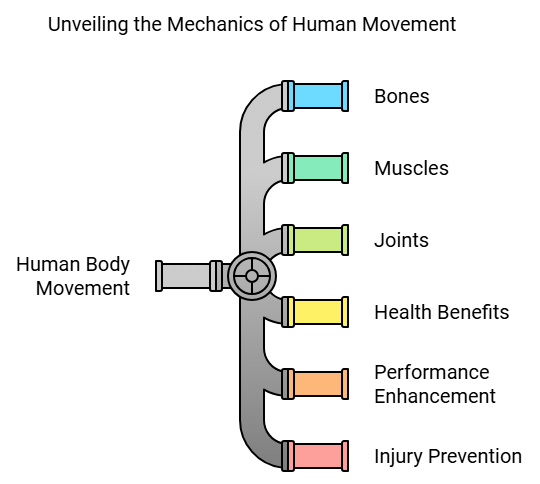
Here are examples of movements:
- Bending of Elbow and Knee
- Turning of Head
- Moving Arms in a Circle
- Bending Fingers
- Walking or Running
- Swinging the Leg
Joints
- Joints are places in our body where two parts meet, like the elbow, shoulder, or neck.
- Function of Joints: They allow us to bend and move our body parts. Without joints, we wouldn’t be able to move our body parts at all.
- Bones and Joints: Bones are hard structures in our body, and they can’t bend. Joints are where these bones come together, allowing movement.
For example, the elbow is where the upper arm and forearm bones meet, and it lets us bend our arm.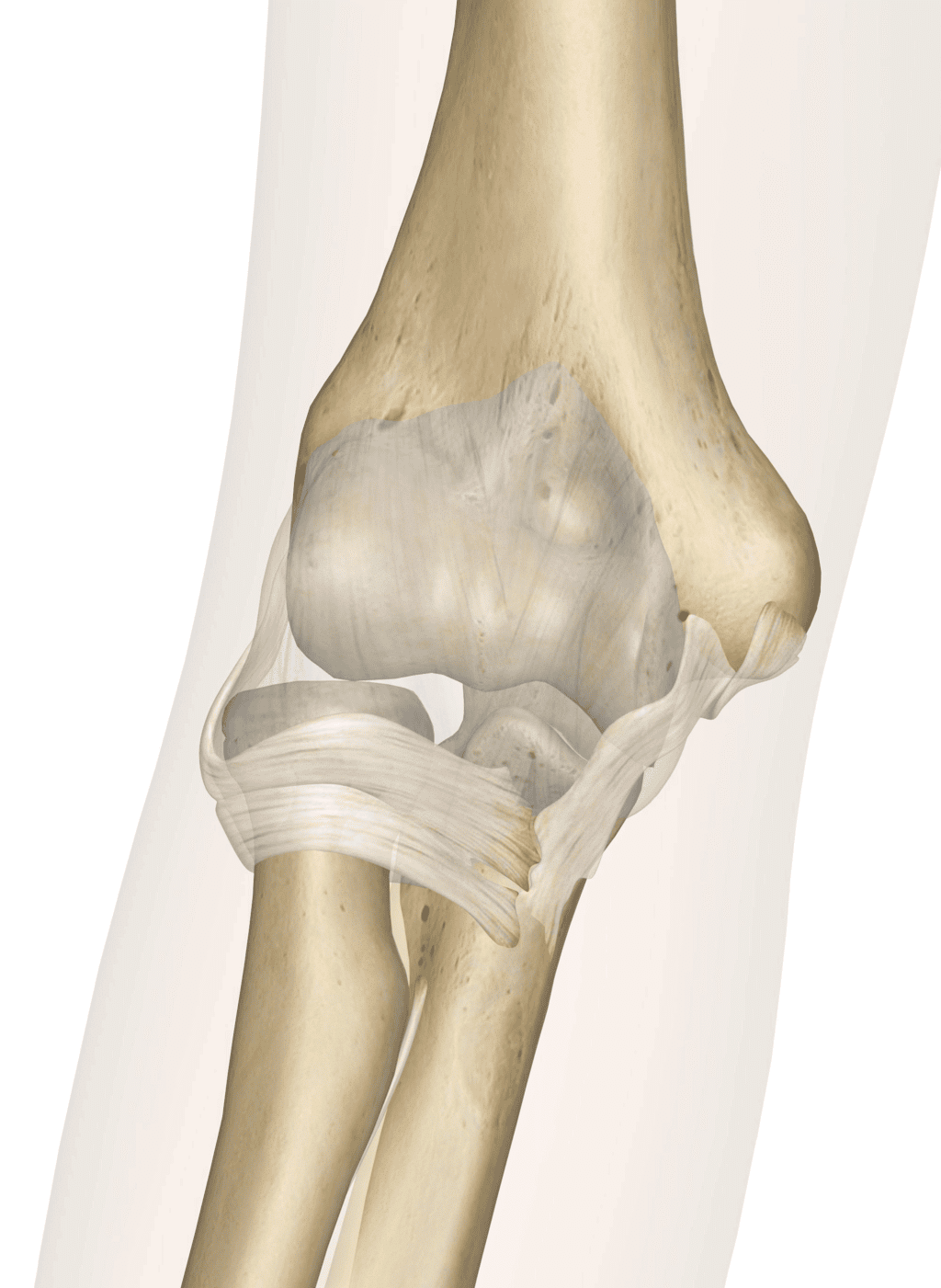 Joint
Joint
Ball and Socket Joints
- In this joint, the rounded end of one bone fits into the cavity (hollow space) of another bone.
- It permits movement in all directions.
- The joint between the shoulder and the upper arm is an example of a ball and socket joint.
- Similarly, the joint between the thigh and hip is an example of a ball and socket joint.
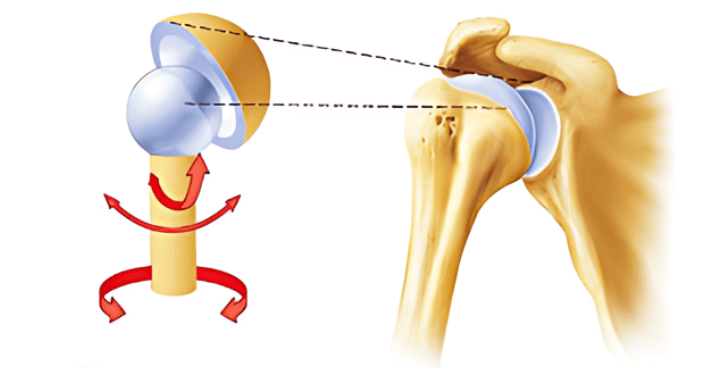 Shoulder Joint
Shoulder Joint
Pivotal Joint
- Structure: In a pivotal joint, a cylindrical bone rotates within a ring-shaped bone or structure.
- Movement: This joint allows movement in a limited range—mainly rotation. For example, it lets us bend our head forward and backward and turn it from side to side.
- Example: The joint where our neck connects to the head is a pivotal joint. It allows these specific head movements but does not enable a complete circle of rotation like a ball-and-socket joint.
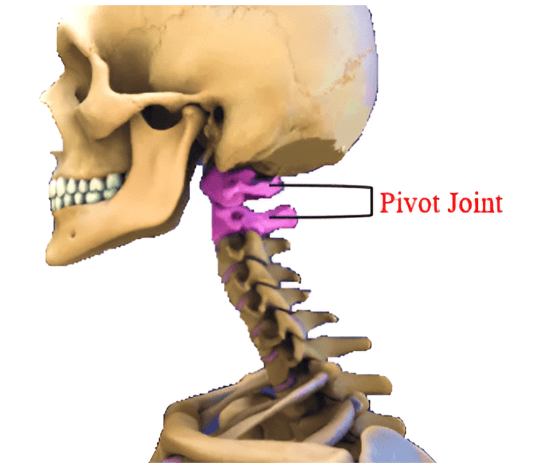 Pivotal Joint
Pivotal Joint
Hinge Joints
- Structure: A hinge joint allows movement in one direction, similar to the way a door moves on its hinges.
- Movement: This joint permits a back-and-forth or swinging motion. It does not allow rotational movement like a ball-and-socket joint.
- Example: The elbow is an example of a hinge joint. It allows your arm to move forward and backward but not in a circular motion.
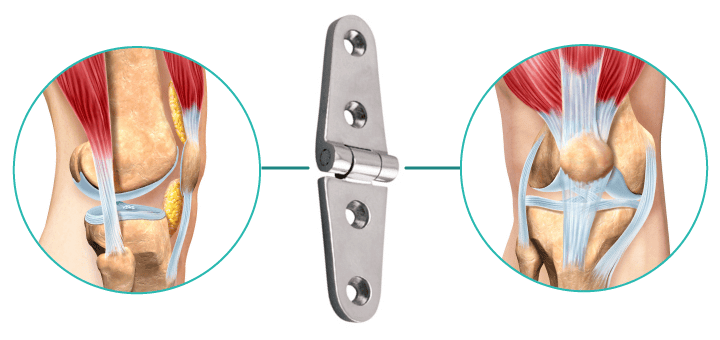 Knee Hinge Koint
Knee Hinge Koint
Fixed Joints
- Structure: Fixed joints are immovable joints where bones are joined tightly together, and no movement occurs at these joints.
- Example: The joints between the bones in our head, such as where the upper jaw meets the rest of the skull, are fixed joints.
- Movement: While the lower jaw can move to open and close the mouth, the upper jaw remains fixed and does not move.
Skeleton as Framework
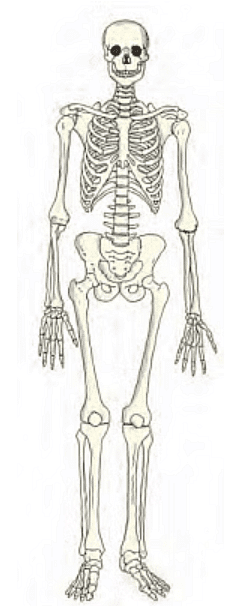 Skeleton
Skeleton
X-ray images show the shapes of bones and help doctors detect injuries or conditions in bones.
Fingers and Hand
- Bones in Middle Finger: Contains multiple bones; compare the number with the ability to bend fingers.
- Wrist: Made of several small bones called carpals, which provide flexibility.
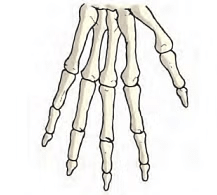 Bones & Hands
Bones & Hands
Rib Cage
- Structure: The rib cage is a bony structure formed by the ribs, chest bone (sternum), and backbone (vertebrae).
- Function: It encases and protects vital organs such as the heart and lungs.
- Details:
Ribs: There are 12 pairs of ribs on each side of the chest.
Shape: The ribs are bent and curve around the chest to create a protective box-like structure.
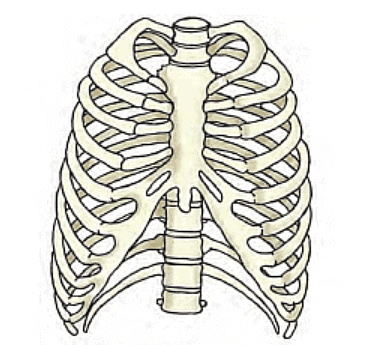 Rib Cage
Rib Cage
Backbone (Spine)
- Structure: Also known as the spine or vertebral column, it runs down the middle of the back.
- Components: Consists of 33 small bones called vertebrae.
- Function: Supports the body and allows movement. The backbone is flexible because it is made up of many small bones rather than a single long bone.
- Details:
Vertebrae: Each vertebra is separated by cartilage, which provides cushioning and flexibility.
Movement: The backbone allows bending and twisting of the body due to its segmented structure.
 Backbone
Backbone
Shoulder Bones
- Location: Prominent at the back where the shoulders are.
- Function: Supports arm movement and attachment.
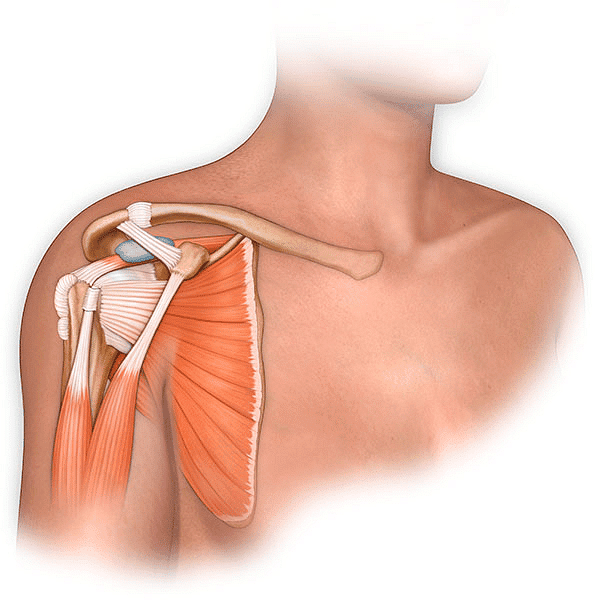 Shoulder Bones
Shoulder Bones
Pelvic Bones
- Location: Encloses the portion below the stomach; the part you sit on.
- Function: Supports the weight of the upper body and provides attachment for the legs.
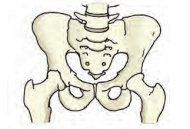 Pelvic Bones
Pelvic Bones
Skull
- Structure: Composed of many bones joined together.
- Function: Encloses and protects the brain.
 Skull
Skull
Cartilage
- Definition: Softer and more flexible than bones; can be bent.
- Location: Found in the ear (different from the ear lobe) and in joints.
Muscles
Observation of Muscle Contraction: When you observe a swollen region in the upper arm, it indicates that the muscle is contracting. During contraction, the muscle becomes shorter, stiffer, and thicker, pulling on the bone.
Relaxation: Once the arm is brought back to its normal position, the muscle returns to its original state. It is no longer contracted and returns to its usual length.
Muscle Function: Muscles work in pairs:
Contraction: One muscle contracts to pull the bone in a specific direction.
Relaxation: The opposing muscle relaxes. To move the bone back, the relaxed muscle then contracts while the first muscle relaxes.Pull Only: Muscles can only pull; they cannot push. Hence, two muscles work together to move a bone in both directions.
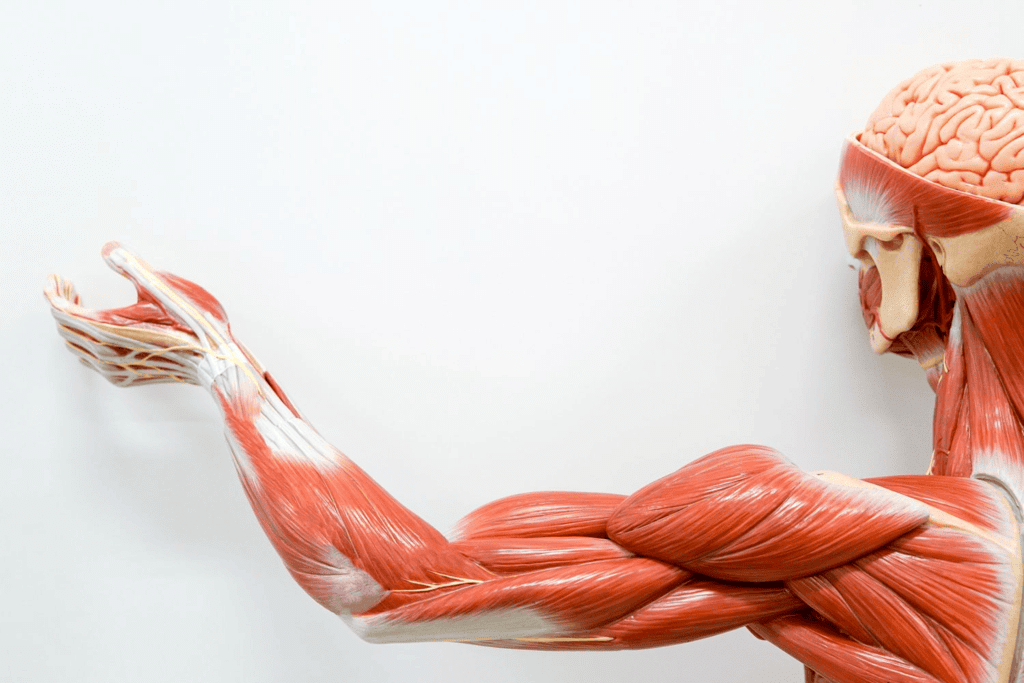 Muscles
Muscles
"Gait of Animals"
Different animals have different organs for locomotion.
Earthworm
- The earthworm's body is made up of many rings joined end to end.
- It lacks bones but has muscles that help it extend and shorten its body.
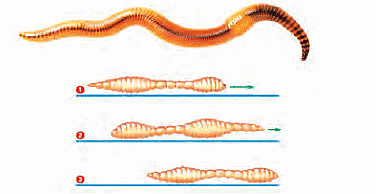 Earthworm
Earthworm - During movement, the earthworm extends the front part of its body while the rear remains fixed.
- It then fixes the front end, releases the rear end, and shortens the body to pull the rear forward, moving in small increments.
- The earthworm secretes a slimy substance to aid in movement.
- Tiny bristles (hair-like structures) under its body, connected with muscles, help the earthworm grip the ground.
- The earthworm eats its way through the soil, and its digestive process makes the soil more useful for plants by excreting undigested material.
Snail
- The shell of the snail is its outer skeleton, but it is not made of bones.
- The shell is a single unit and does not assist in movement; it must be dragged.
 Snail
Snail - The foot of the snail, a thick structure made of strong muscles, extends from an opening in the shell.
- The foot exhibits a wavy motion during movement.
- The snail's movement is generally slower compared to that of an earthworm.
Cockroach
- Cockroaches can walk, climb, and fly.
- They have three pairs of legs used for walking.
- Their body is covered with a hard outer skeleton made of plates joined together, allowing movement.
- They have two pairs of wings attached behind the head.
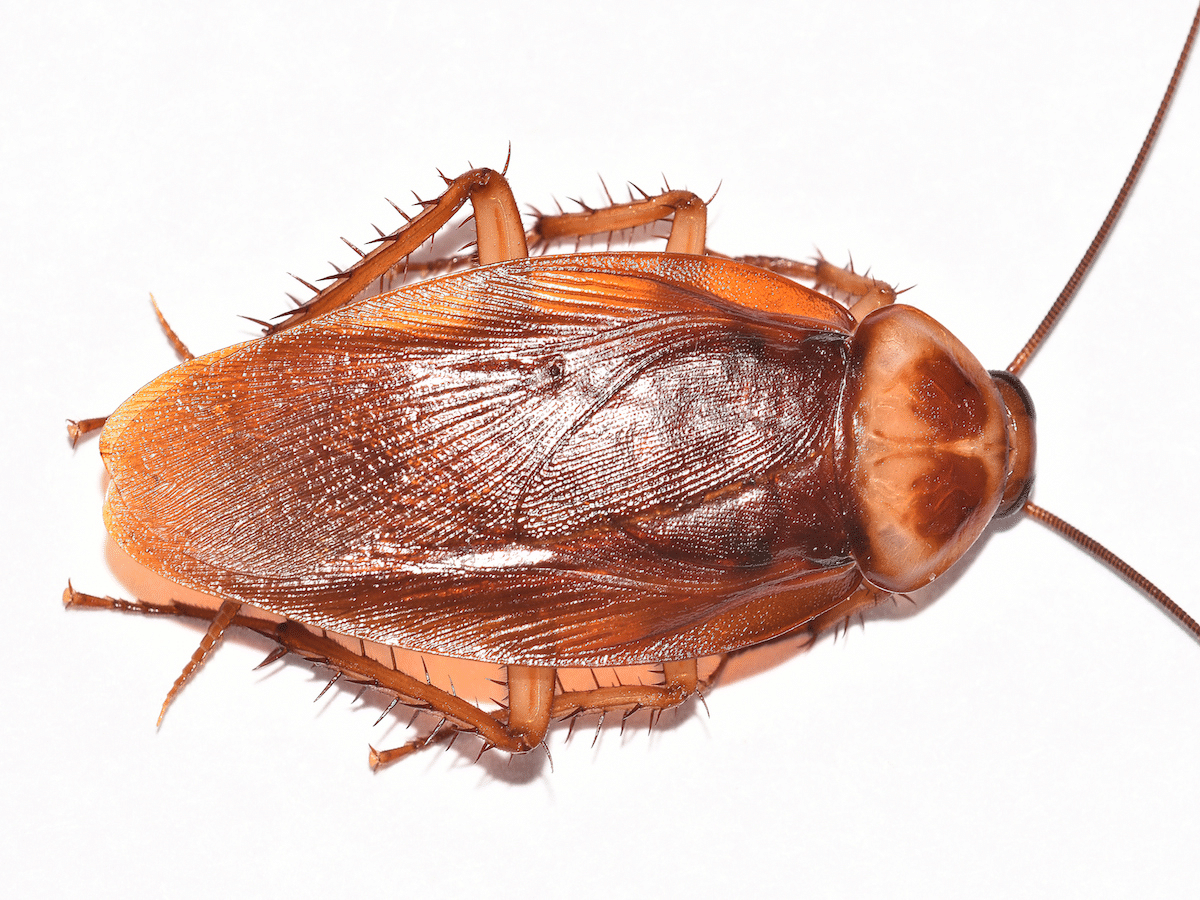 Cockroach
Cockroach - Distinct muscles near the legs facilitate walking.
- Body muscles control the wings for flying.
Birds
- Birds can fly in the air, walk on the ground, and some, like ducks and swans, can also swim in water.
- Their bodies are well-suited for flight with hollow and light bones.
- Hind limb bones are adapted for walking and perching.
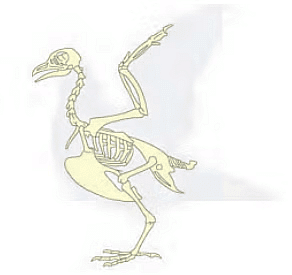 Bird Skeleton
Bird Skeleton
- Forelimb bones are modified into wings.
- Shoulder bones are strong to support flight.
- Breastbones are modified to hold flight muscles used to move the wings up and down.
Fish
Streamlined Shape: Fish have a streamlined body shape, similar to a boat, which helps them move efficiently through water. The body is tapered at both ends, making it easier for water to flow around it.
Swimming Mechanism:
- The fish's muscles cause the body to curve from side to side. The front part of the body curves to one side, while the tail swings to the opposite side, forming a curve.
- This movement creates a series of jerks that push the fish forward. The fish then quickly reverses the curve to continue swimming.
 Fish
Fish
Fins and Balance:
- Tail Fins: The tail fins play a crucial role in propelling the fish forward.
- Other Fins: Additional fins help maintain balance and direction while swimming.
Flippers for Divers: Underwater divers use fin-like flippers on their feet, which function similarly to fish fins, aiding in easier movement through water.
How do Snakes Move?
Snakes have a long backbone and numerous thin muscles that are interconnected along the length of their body. These muscles are also connected to the backbone, ribs, and skin.
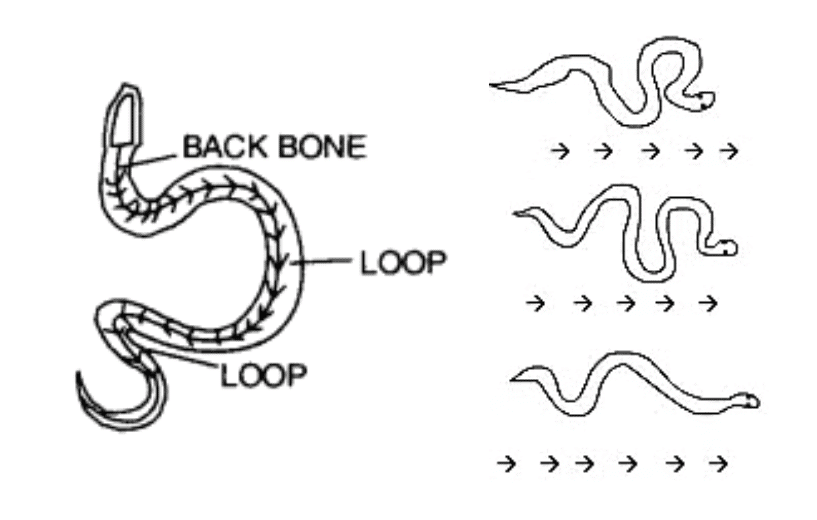 Snake
Snake
Movement Mechanism:
- The snake's body curves into many loops. Each loop presses against the ground to push the snake forward.
- The continuous looping motion allows the snake to move quickly, though not in a straight line.
FAQs on Body Movement Class 6 Notes Science Chapter 5
| 1. What are joints and why are they important for body movements? |  |
| 2. How does the skeleton function as a framework for the body? |  |
| 3. What is the significance of animal gait and how does it vary among different species? |  |
| 4. What are the different types of joints found in the human body? |  |
| 5. How do muscles and joints work together to facilitate movement? |  |





















